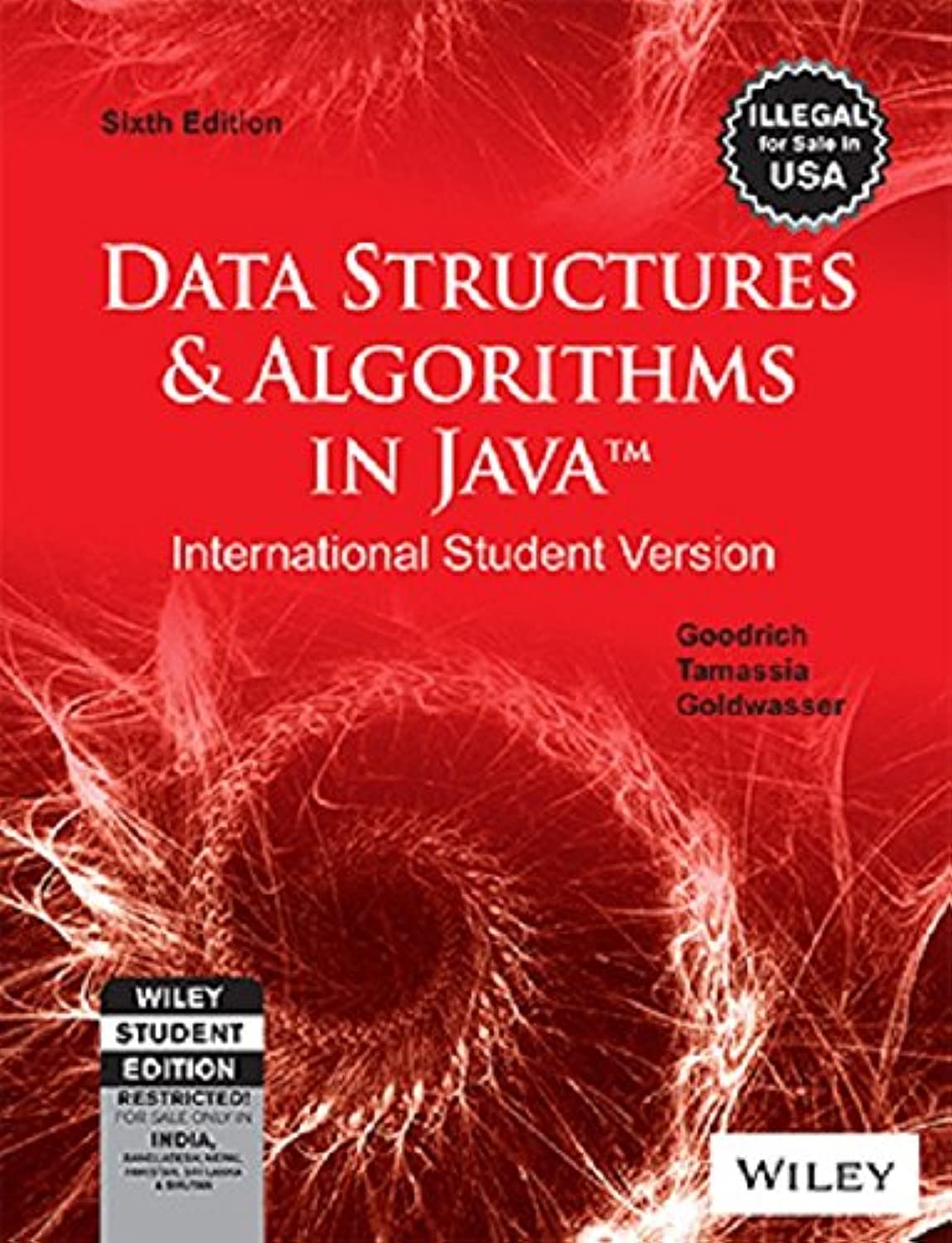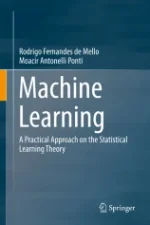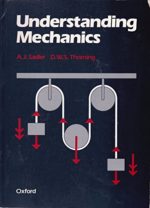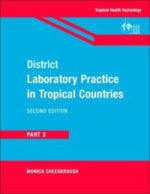The design and analysis of efficient data structures has long been recognized as a key component of the Computer Science curriculum. Goodrich and Tomassia’s approach to this classic topic is based on the object-oriented paradigm as the framework of choice for the design of data structures. For each ADT presented in the text, the authors provide an associated Java interface. Concrete data structures realizing the ADTs are provided as Java classes implementing the interfaces. The Java code implementing fundamental data structures in this book is organized in a single Java package, net.datastructures. This package forms a coherent library of data structures and algorithms in Java specifically designed for educational purposes in a way that is complimentary with the Java Collections Framework.
Data Structures and Algorithms in Java 6th Edition
KSh 2,000.00
The design and analysis of efficient data structures has long been recognized as a key component of the Computer Science curriculum. Goodrich and Tomassia’s approach to this classic topic is based on the object-oriented paradigm as the framework of choice for the design of data structures. For each ADT presented in the text, the authors provide an associated Java interface. Concrete data structures realizing the ADTs are provided as Java classes implementing the interfaces. The Java code implementing fundamental data structures in this book is organized in a single Java package, net.datastructures. This package forms a coherent library of data structures and algorithms in Java specifically designed for educational purposes in a way that is complimentary with the Java Collections Framework.
2 in stock
Related products
-
Plant Systematics 3rd Edition
KSh 10,220.00Plant Systematics, Third Edition, has made substantial contributions to plant systematics courses at the upper-undergraduate and first year graduate level, with the first edition winning The New York Botanical Garden’s Henry Allan Gleason Award for outstanding recent publication in plant taxonomy, plant ecology or plant geography. This third edition continues to provide the basis for teaching an introduction to the morphology, evolution and classification of land plants. A foundation of the approach, methods, research goals, evidence and terminology of plant systematics are presented, along with the most recent knowledge of evolutionary relationships of plants and practical information vital to the field.
In this new edition, the author includes greatly expanded treatments on families of flowering plants, as well as tropical trees (all with full-color plates), and an updated explanation of maximum likelihood and Bayesian inference algorithms. Chapters on morphology and plant nomenclature have also been enhanced with new material.
- Covers research developments in plant molecular biology
- Features clear, detailed cladograms, drawings and photos
- Includes major revisions to chapters on phylogenetic systematics and plant morphology
-
Machine Learning A Practical Approach on the Statistical Learning Theory
KSh 19,000.00This book presents the Statistical Learning Theory in a detailed and easy to understand way, by using practical examples, algorithms and source codes. It can be used as a textbook in graduation or undergraduation courses, for self-learners, or as reference with respect to the main theoretical concepts of Machine Learning. Fundamental concepts of Linear Algebra and Optimization applied to Machine Learning are provided, as well as source codes in R, making the book as self-contained as possible.
It starts with an introduction to Machine Learning concepts and algorithms such as the Perceptron, Multilayer Perceptron and the Distance-Weighted Nearest Neighbors with examples, in order to provide the necessary foundation so the reader is able to understand the Bias-Variance Dilemma, which is the central point of the Statistical Learning Theory.
Afterwards, we introduce all assumptions and formalize the Statistical Learning Theory, allowing the practical study of different classification algorithms. Then, we proceed with concentration inequalities until arriving to the Generalization and the Large-Margin bounds, providing the main motivations for the Support Vector Machines.
From that, we introduce all necessary optimization concepts related to the implementation of Support Vector Machines. To provide a next stage of development, the book finishes with a discussion on SVM kernels as a way and motivation to study data spaces and improve classification results.
-
Software Testing: A Craftsman’s Approach, Fourth Edition
KSh 11,060.00This updated and reorganized fourth edition of Software Testing: A Craftsman’s Approach applies the strong mathematics content of previous editions to a coherent treatment of Model-Based Testing for both code-based (structural) and specification-based (functional) testing. These techniques are extended from the usual unit testing discussions to full coverage of less understood levels integration and system testing.
The Fourth Edition:
- Emphasizes technical inspections and is supplemented by an appendix with a full package of documents required for a sample Use Case technical inspection
- Introduces an innovative approach that merges the Event-Driven Petri Nets from the earlier editions with the “Swim Lane” concept from the Unified Modeling Language (UML) that permits model-based testing for four levels of interaction among constituents in a System of Systems
- Introduces model-based development and provides an explanation of how to conduct testing within model-based development environments
- Presents a new section on methods for testing software in an Agile programming environment
- Explores test-driven development, reexamines all-pairs testing, and explains the four contexts of software testing
Thoroughly revised and updated, Software Testing: A Craftsman’s Approach, Fourth Edition is sure to become a standard reference for those who need to stay up to date with evolving technologies in software testing. Carrying on the tradition of previous editions, it will continue to serve as a valuable reference for software testers, developers, and engineers.
-
Understanding Mechanics -Paperback by A. J. Sadler (Author),
KSh 12,000.00One of the clearest and most straightforward texts ever published, Understanding Mechanics covers all the topics required in the single-subject A Level.
It is equally appropriate for those preparing for other Mathematics examinations at A Level and for students on technical courses in further and higher education.
Key Points:
· Principles are introduced in a simple and direct manner and all have worked examples
· Ample opportunity is given for practice with questions and exercises carefully graded to provide a steady progression
· Each chapter closes with a comprehensive selection of recent examination questions
· Answers are given at the back of the book
-
DISTRICT LAB PRACT PART 2
KSh 6,000.00This new edition includes an update on HIV diseaseAIDS, recently developed HIV rapid tests to diagnose HIV infection and screen donor blood, and current information on antiretroviral drugs and the laboratory monitoring of antiretroviral therapy. Information on the epidemiology and laboratory investigation of other pathogens has also been brought up to date. Several new, rapid, simple to perform immunochromatographic tests to assist in the diagnosis of infectious diseases are described, including those for brucellosis, cholera, dengue, leptospirosis, syphilis and hepatitis. Recently developed lgM antibody tests to investigate typhoid fever are also described. The new classification of salmonellae has been introduced. Details of manufacturers and suppliers now include website information and e-mail addresses. The haematology and blood transfusion chapters have been updated, including a review of haemoglobin measurement methods in consideration of the high prevalence of anaemia in developing countries.
-
Why Do Crabs Walk Sideways?
KSh 695.00Covering everything from scuttling crabs to elephant seals, this title is ideal for young readers. Activity panels give tips on further learning and a fun quiz at the back tests children on what they have read.
-
Why Do Kestrels Hover?
KSh 695.00Covering everything from eagles to owls, this title is ideal for young readers. Activity panels give tips on further learning and a fun quiz at the back tests children on what they have read
-
Instructional Technology
KSh 20,720.00First Published in 1987. The technical knowledge that constitutes instructional technology includes practical procedures for using existing media to deliver instruction, and also to deliver portions of instruction that supplement the communications of an instructor. Instructional technology includes practical techniques of instructional delivery that systematically aim for effective learning, whether or not they involve the use of media. It is a basic purpose of the field of instructional technology to promote and aid the application of these known and validated procedures in the design and delivery of instruction.










Be the first to review “Data Structures and Algorithms in Java 6th Edition”